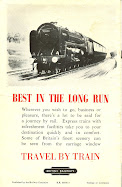 |
The Post Office Railway. Photographs copyright BPMA
|
The British Postal Museum and Archive is assessing the viability of opening a section of the former Post Office underground railway, 'Mail Rail', as a heritage railway and visitor attraction. Development funding of £250,000 was awarded from the Heritage Lottery Fund in 2012.
The opening of the Post Office Railway in 1927 in London, the world's first driverless electric railway, revolutionised the delivery of mail in the UK. Mail Rail was a solution to carrying mail quickly and efficiently across London, as congested and polluted streets meant road transport was slow and very unpredictable. A two foot gauge railway was built, which transported mail underground.
The railway consisted of six and a half miles of tunnels, dug by hand, which ran at an average of 70 feet below ground. It connected the West and East ends of London and followed part of the existing London Underground route.
There were eight stations in total, situated at
Paddington District Office;
Western Parcels Office (Baker Street);
Western District Office (Rathbone Place);
Western Central Central
District Office (High Holborn);
Mount Pleasant; King
Edward Building (St Paul's);
Liverpool Street railway station
and Eastern District Office (Whitechapel Road).
1930 and 1931 were key milestones
when 51 trains were built, each 27-foot long; and at its peak, 34 trains ran 22
hours a day along 23 miles of track. In 1951 the railway was handling over 12 million bags of letters and parcels.
Progressing to the 1980s, trains
travelled at an average speed of 35 mph and the time taken to run trains from Whitechapel
to Paddington was around 30 minutes. By the late 1990s more than six million
bags of mail were carried below ground each year - four million letters every
day! The network closed in 2003 after almost 80 years' service and still
remains the world's only dedicated underground mail transport system
in existence.
 "The BPMA is a national treasure of
global importance" Mayor Boris Johnson
"The BPMA is a national treasure of
global importance" Mayor Boris Johnson
Opening Up Access for All
Few people have had access to
this unique part of our heritage. However more and more people are learning of
its significance and place in world history. Michael Portillo, for example,
popularised Mail Rail in his TV programme, Great British Railway Journeys, and
BPMA focus group research revealed that the majority of people questioned would
love to take a ride on a train.
Having a visitor attraction would
be a major means of encouraging people to come to both the new postal museum and
Mail Rail; however to achieve this the BPMA will need to raise the majority of
funds by November 2013 to make it a reality by 2016.
The vision is for a first-class attraction
which would creatively convert the Mail Rail depot at Mount Pleasant into a museum exhibition space
and introduce a fascinating 15 minute ride on the Mail Rail network. Newly
designed battery-operated trains will journey through the existing tunnels
under the mail centre - an unforgettable experience. The fully narrated tour will
describe the construction of the system from 1915, its opening in 1927 and
operation until 2003.
The old car depot will be
transformed into a lively exhibition, tracing the history of moving the mail
both above and below ground. Vehicles will include pneumatic rail cars from the
1860s, which were once propelled by air through specially designed tunnels.
Video projections, objects and interactive displays will offer personal
insights into the daily lives of the Post Office engineers who kept the system
running - a service that shaped the modern world and touched the lives of
countless generations.
Further details about the railway
heritage attraction will be developed over time and posted on the BPMA website www.postalheritage.org.uk
or sign up to the e-newsletter to receive regular updates and news on activities
www.postalheritage.org.uk/mailing.
 |
Post Office Railway Depot Mount Pleasant - Photograph copyright BPMA
|












